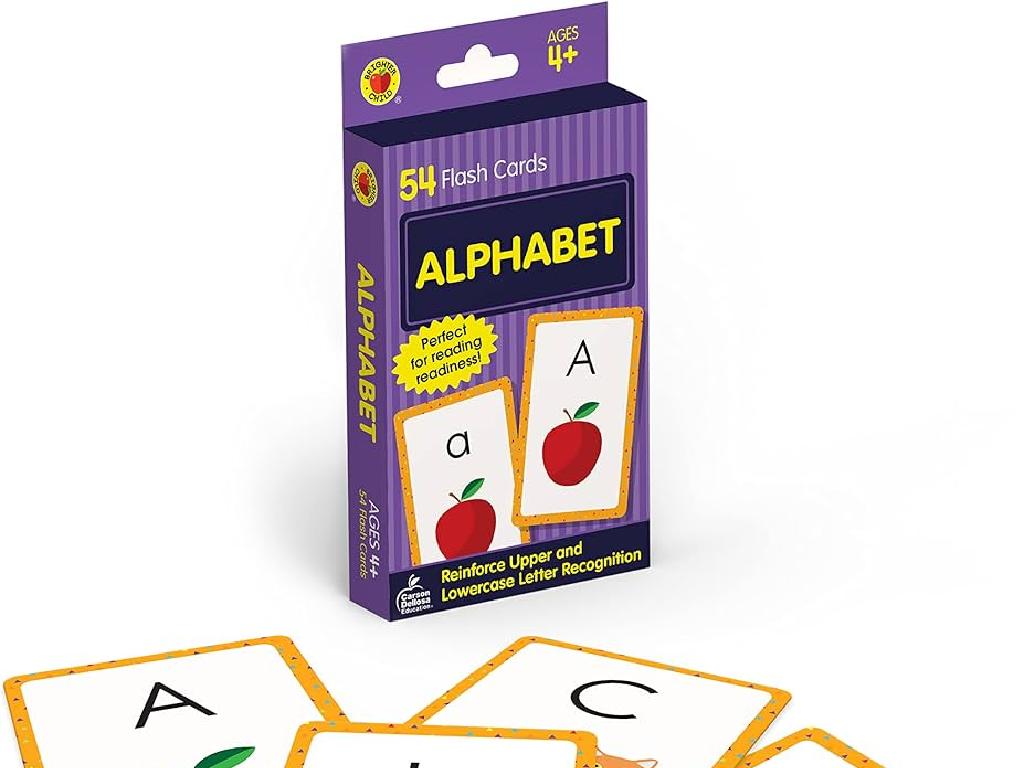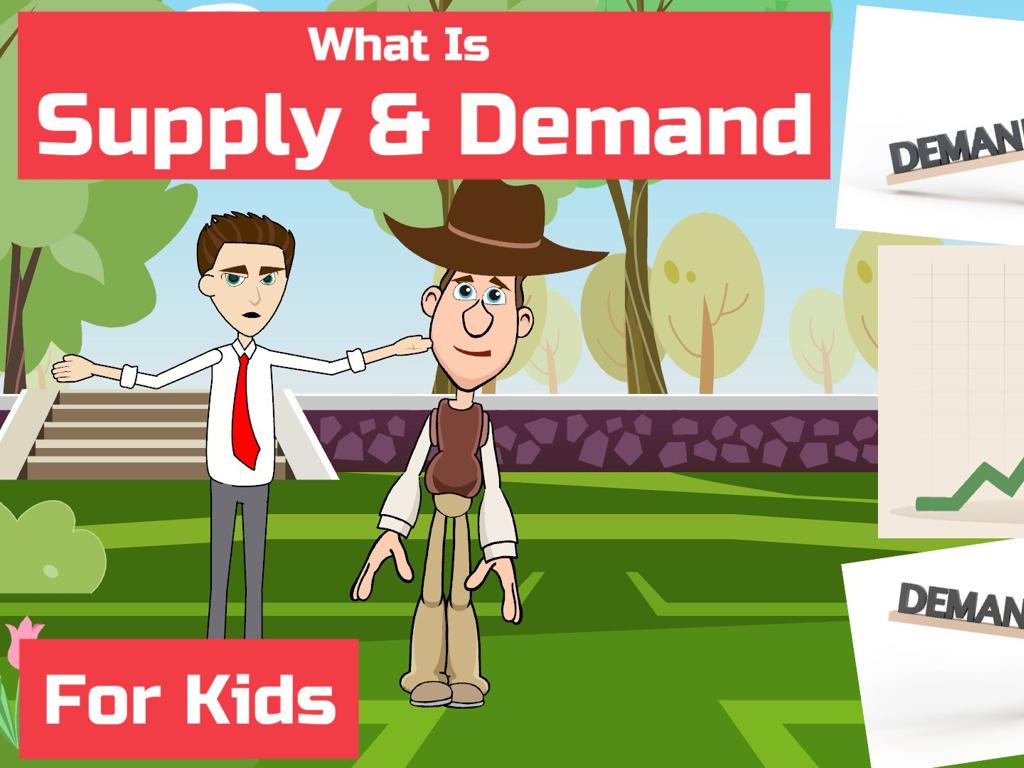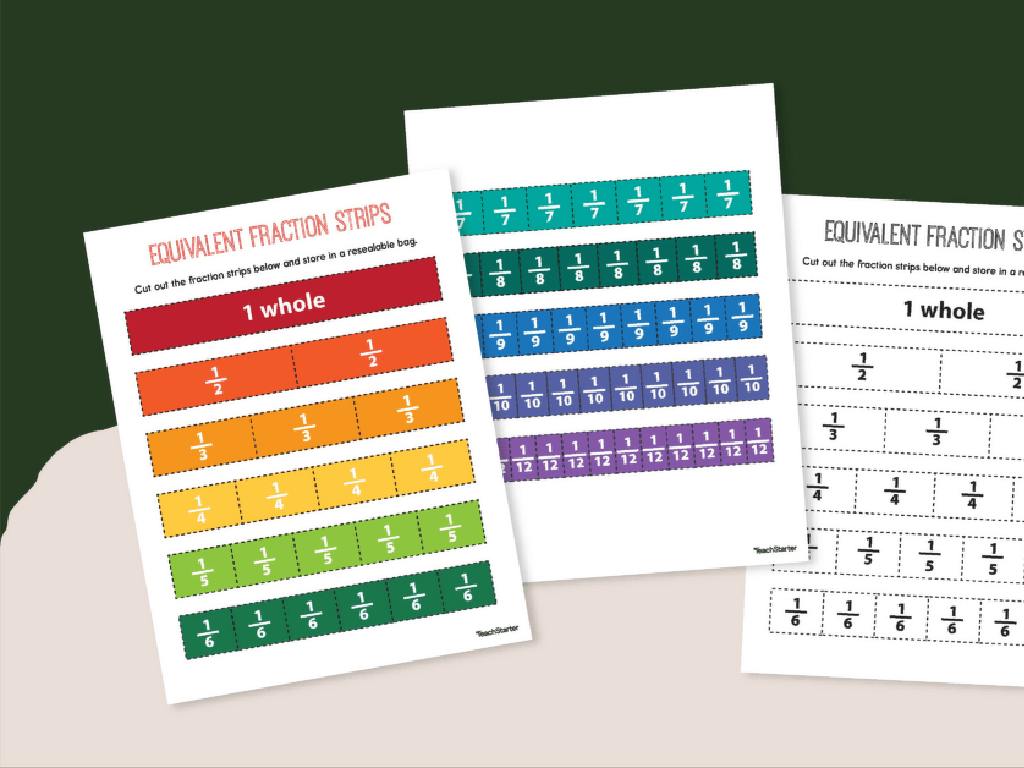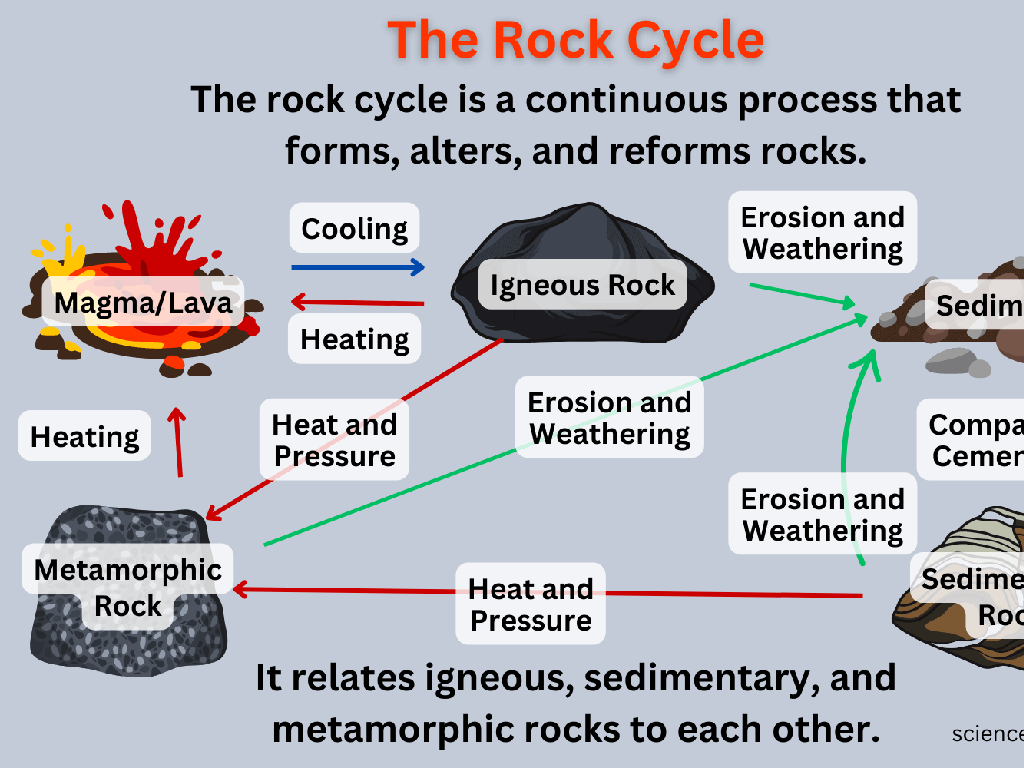Multiply Using The Distributive Property: Area Models
Subject: Math
Grade: Seventh grade
Topic: Equivalent Expressions
Please LOG IN to download the presentation. Access is available to registered users only.
View More Content
Understanding the Distributive Property
– Equivalent expressions basics
– Expressions with the same value, e.g., 3(4 + 5) and 3*4 + 3*5
– The Distributive Property
– It allows us to multiply a sum by multiplying each addend separately and then add the products.
– Multiplying with distributive property
– Use area models to visualize distribution: break a rectangle into smaller parts to find total area.
– Benefits of distributive property
– Simplifies complex multiplication, especially with large numbers or variables.
|
This slide introduces students to the concept of equivalent expressions and the distributive property in multiplication. Start by explaining that equivalent expressions are different expressions that have the same value. Then, introduce the distributive property as a method to multiply a number by a sum or difference by distributing the multiplication to each addend. Use area models to visually demonstrate how the distributive property works, breaking up a larger problem into smaller, more manageable parts. Emphasize the practicality of this property in simplifying multiplication, especially when dealing with large numbers or algebraic expressions. Encourage students to practice with examples and to visualize the process using area models.
The Distributive Property in Multiplication
– Define the distributive property
– a(b + c) equals ab + ac
– Break down complex expressions
– Split expressions into easier chunks
– Example: 3(x + 4) equation
– 3 times x plus 3 times 4 equals 3x plus 12
– Simplify to find equivalent expressions
– Use property to simplify and solve problems
|
The distributive property is a key concept in algebra that allows us to multiply a single term by each term within a parenthesis separately. It’s essential for simplifying complex expressions and solving equations. For example, 3(x + 4) can be broken down into 3x + 12, showing how the property distributes the multiplication across the terms inside the parentheses. This slide will help students understand how to apply the distributive property to create equivalent expressions, which is a foundational skill in algebra. Encourage students to practice with additional examples and to recognize the property’s use in various mathematical problems.
Visualizing Multiplication with Area Models
– Area models visualize multiplication
– Break down complex multiplication into manageable parts
– Each section shows expression parts
– The model is divided to represent terms like 3x and 3*4
– Example: Model for 3(x + 4)
– Visualize 3 groups of the quantity (x + 4)
|
Area models are a powerful visual tool for understanding the distributive property in multiplication. They allow students to break down expressions into simpler parts, making it easier to grasp the concept of distribution. For example, with the expression 3(x + 4), students can draw a rectangle divided into sections labeled 3x and 12, representing the terms of the expression when distributed. This visual approach helps students see the relationship between algebra and geometry, reinforcing their understanding of equivalent expressions. Encourage students to create their own area models for different expressions to solidify their comprehension.
Multiplying with Area Models
– Draw and divide a rectangle
– Divide based on the terms of the expression, e.g., (3 + 2) x 4
– Label each rectangle section
– Assign terms to sections, e.g., top 3×4, bottom 2×4
– Calculate area of sections
– Multiply length by width for each, e.g., 3×4 and 2×4
– Sum areas for total product
– Add the areas to find the total, e.g., 12 + 8 = 20
|
This slide introduces the concept of using area models to visualize the distributive property in multiplication. Start by drawing a rectangle to represent the entire product. Then, divide the rectangle into sections that correspond to the terms in the expression being multiplied. Each section is labeled with its respective term, and the area of each section is calculated by multiplying its dimensions. These individual areas represent the products of each term in the expression when distributed. Finally, summing the areas of all sections will give the total product of the original expression. This visual method helps students understand how distribution works in multiplication and reinforces the concept of equivalent expressions.
Multiplying with Distributive Property: Area Model
– Example: Multiply 2(x + 5)
– Draw the area model
– Sketch a rectangle, divide into two parts
– Label each section of the model
– One part is ‘x’, other is ‘5’; both multiplied by ‘2’
– Calculate the product
– Add the areas to find 2x + 10
|
This slide is a practice problem to help students apply the distributive property using an area model. Start by writing the expression 2(x + 5) on the board. Then, draw a rectangle and divide it into two sections to represent ‘x’ and ‘5’. Label one section ‘x’ and the other ‘5’, and indicate that each is being multiplied by ‘2’. This visual representation helps students understand how the distributive property works. After drawing and labeling the area model, guide students to multiply each section by ‘2’ and then add the results together to find the product, which is 2x + 10. Encourage students to try similar problems on their own to reinforce the concept.
Class Activity: Area Models with Distributive Property
– Pair up and create an area model
– Model for expression: 4(y + 3)
– Visualize the expression as a rectangle’s area
– Discuss your strategy with your partner
– Share how you determined the product
– Class review of different models
|
This activity is designed to help students visualize the distributive property using area models. Students should pair up and draw a rectangle to represent the expression 4(y + 3), dividing it into sections to show the ‘4’ multiplied by each term inside the parentheses. Encourage them to discuss their thought process and how they used the area model to distribute the ‘4’. After the activity, bring the class together to review different approaches. This will help students see that there may be multiple ways to model the same expression and understand the distributive property more concretely. Possible variations for different pairs could include using different colors for each term, labeling the dimensions of the rectangle with the terms of the expression, or even creating a physical model using tiles or blocks.
Homework: Mastering the Distributive Property
– Practice with the distributive property
– Complete the provided worksheet
– Solve each problem using the distributive property
– Use area models for expressions
– Visualize multiplication as the area of rectangles
– Share your solutions in the next class
|
This homework is designed to reinforce the concept of the distributive property through practice. Students are provided with a worksheet that contains various expressions requiring the use of the distributive property to simplify. They should use area models to visualize and solve the expressions, which will help solidify their understanding of how multiplication can be broken down into more manageable parts. In the next class, students will have the opportunity to share their solutions, allowing them to learn from each other and clarify any misunderstandings. The teacher should prepare to discuss common challenges and highlight effective strategies used by students.
Conclusion: Distributive Property & Area Models
– Recap of key lesson points
– Significance of distributive property
– It allows for breaking down complex problems into simpler chunks.
– Area models aid in multiplication
– Visualizing multiplication as an area makes it more intuitive.
– Review with class activity
– Engage students with a quick problem using area models.
|
As we conclude today’s lesson, it’s important to revisit the main concepts we’ve covered. The distributive property is a critical tool in mathematics that helps in simplifying complex multiplication problems by distributing or breaking them down into more manageable parts. Area models provide a visual representation that can make the process of multiplying larger numbers more intuitive for students. To reinforce these concepts, conduct a brief class activity where students apply the distributive property using area models to solve a multiplication problem. This will help solidify their understanding and give them the confidence to tackle similar problems in the future.





